Washing baby clothes is an important job for a parent. After all, what could be more important than ensuring that your little one is comfy and clean 24/7? As a new parent, there are a million things to learn and one of them is how to wash baby clothes.
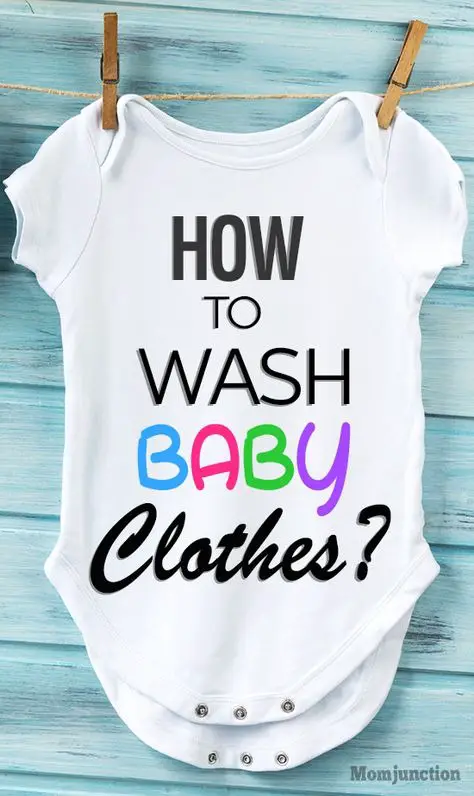
Learning how to wash baby clothes can seem daunting at first, but with the right equipment, helpful supplies, and a little know-how, you’ll be able to find yourself breezing through loads of laundry like an old pro in no time. That’s why we put together this step-by-step guide, so keep reading to learn more!
Table of Contents
Do You Need to Wash Baby Clothes Separately?
A commonly asked question among new parents is if they need to wash their newborn’s clothing separately from the rest of the family. Opinions will vary, however, the simple answer is no. Of course, you may want to take extra precautions and feel more comfortable washing your little one’s garments on their own, but in reality, it isn’t necessary.
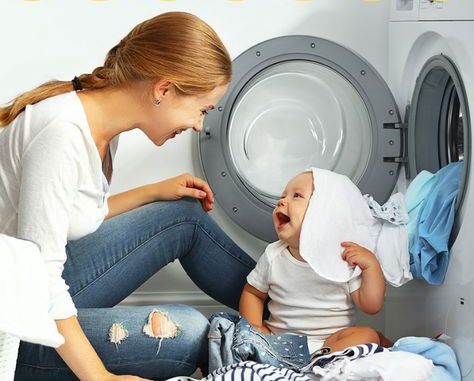
Most detergents are gentle enough that a normal cycle with other items should be fine. So while the ‘advice’ might be to separate your baby’s laundry from the rest of the family members, really all you need to make sure is that your detergent is mild and appropriate for babies and then you can feel free to join them in the same load!
Here are some instances where you might want to consider baby-only loads:
- If your baby has eczemaor super sensitive skin, opting for a baby cycle is the way to go.
- Any household that has a family member who works with dangerous chemicals may also want to wash baby clothes separately, just in case any residue from their clothing lingers in the washer.
- If you use a strongly scented detergent for all of your laundries, it can be overwhelming for a baby’s fragile senses.
- If you find yourself having to do heaps of loads given their high usage of clothing throughout the day.
How to Wash Baby Clothes in Your Washing Machine
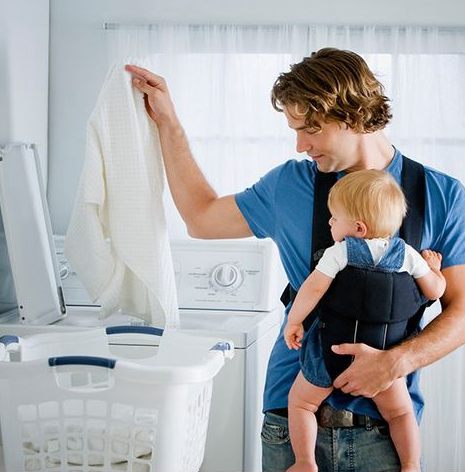
Washing baby clothes is an incredibly important task that requires special care and attention. Taking the time to follow a few simple steps will ensure that your little one’s delicate items stay in tip-top condition each wash cycle. Here’s what you’ll need:
- Gentle liquid detergent
- Fabric softener
- Water
Step 1: Read Labels Before Washing
Yes, that little important label on the back or side seam of your toddler’s tees, rompers, and bibs. Knowing how to wash and dry their clothing properly not only helps you preserve your child’s wardrobe but can also save you some time and money in the long run.
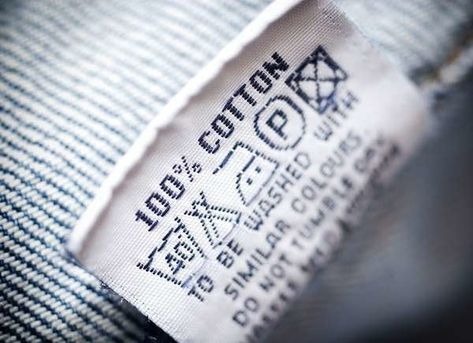
So before tossing any nappies or onesies into the washer, check that washing machine magic symbol on a baby’s clothing first!
Step 2: Sort Your Baby’s Clothes by Colors
Sorting your baby’s clothing properly before throwing them in the washing machine is a crucial step for any mom. With colors mixing around, that can spell disaster! Due to the risk of colors transferring from darker clothes during the wash, it’s important to separate your light-colored items from dark garments.
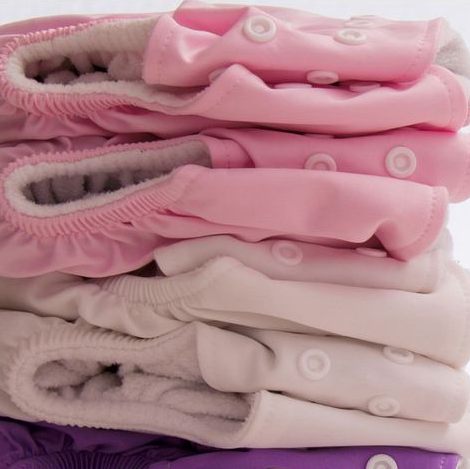
Step 3: Pre-Treat Any Stains
Most times, treating a stain before putting the items in the washer will make the process much easier! Pretreating is an effective way to get rid of any messes that your little one may have created. If you don’t pre-treat, there’s always a risk that the stain won’t come out.
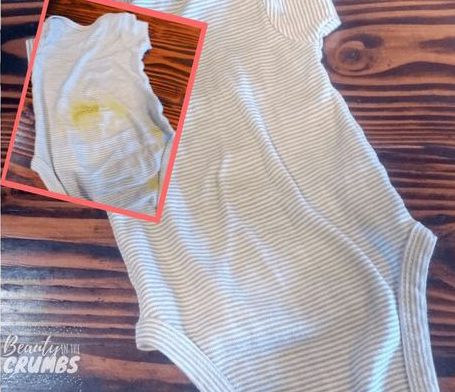
All you need to do is take a damp cloth and lightly rub the stained area with water. Then, get your detergent of choice ready – add two or three drops directly onto the stain, and gently rub it in with your fingers or a washcloth. Once the stain has been worked in, give it another rinse with some plain water.
Step 4: Wash the Clothes
We recommend opting for a cold water setting and gentle wash cycle, ensuring that hard-earned softness doesn’t get damaged in the process. As far as detergent goes, liquids are your friend – they won’t leave anything behind when they rinse away on colder settings and provide an extra layer of protection against skin irritation.
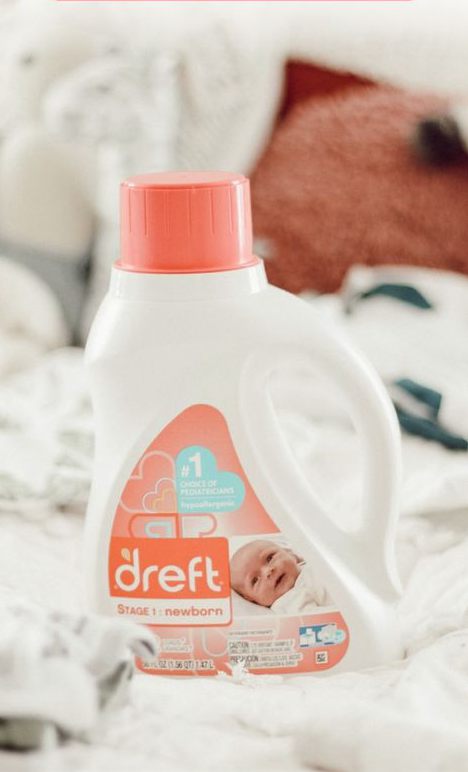
One top tip for washing baby clothes in your washing machine is not to overload it! When the load gets too heavy, the clothes do not get cleaned or rinsed properly; and if you’re looking for extra softness with every wash, using a fabric softener formulated for sensitive skin could be your best bet.
Another important washing tip is to skip the bleach – it will strip away the protective chemical treatments that often come pre-applied to children’s garments.
Step 5: Rinse Twice
Once you’ve added in the laundry and detergent mix, it’s good to rinse twice. This step helps ensure that all residue from the detergent has been washed away, as residue can be quite irritating for your little one’s skin.
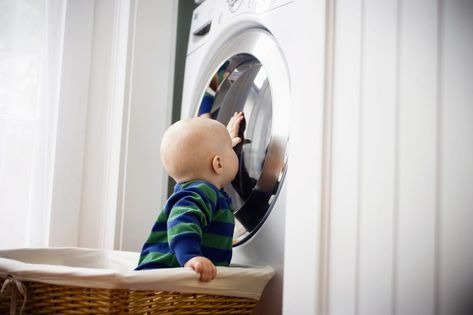
Step 6: Dry the Clothes
If clothes are left wet and are not dried immediately, dampness can breed bacteria and mildew which could prove to be uncomfortable and even hazardous for a baby’s sensitive skin.
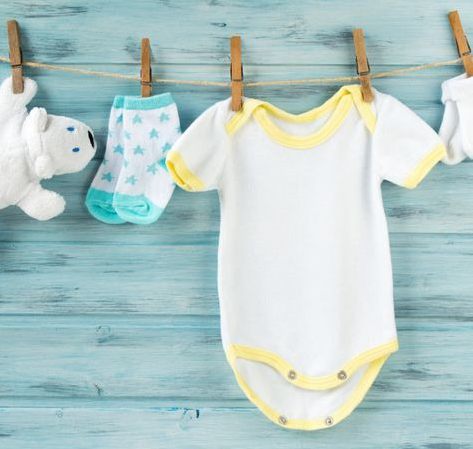
Air-drying or using a dryer (depending on the fabric) right away ensures that clothes won’t be sitting around in a moist environment, allowing parents to provide a safe and hygienic environment for their growing little ones.
How to Hand Wash Baby Clothes
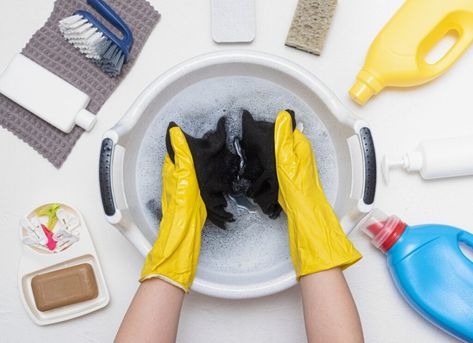
Hand washing baby clothes may sound like a laborious task, but it can be pretty straightforward! Here’s what you’ll need:
- Lukewarm water
- Gentle detergent
Step 1: Wash Your Hands
Hand washing baby clothes is a delicate dance, like a ballet of sorts. And the key to performing it flawlessly? Clean hands! The importance of your hands being germ-free before handling any baby wear can’t be underestimated.
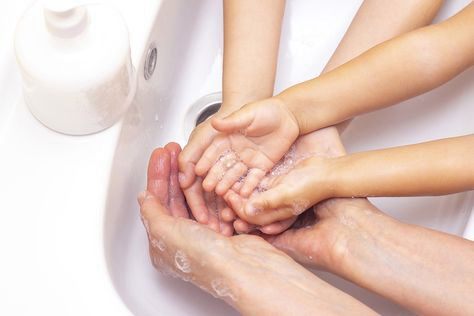
To do it properly, start by wetting both hands and lathering them with soap thoroughly before scrubbing them together for at least 20 seconds. Rinse the suds off and dry your hands thoroughly – and don’t forget to use a paper towel when turning off the tap.
Step 2: Rinse
Make sure that you start with a good pre-wash rinse. It’s impressive what sort of mess a baby can get themselves into in such a short amount of time, but don’t panic – simply scrape off as much from the fabric as you can, then run the fabric under cold water to ensure everything has come off.
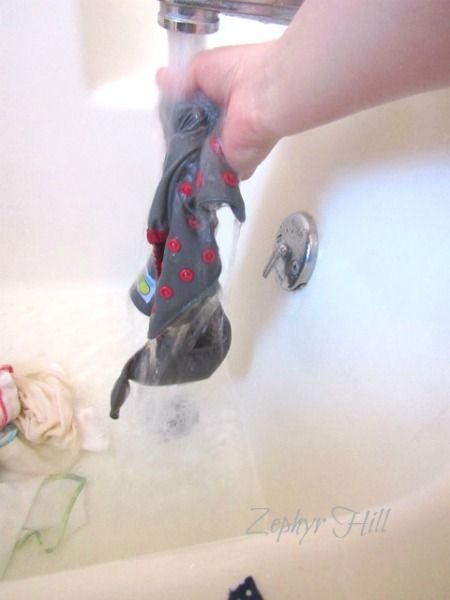
Step 3: Use Lukewarm Water
The water should be “lukewarm”, meaning not too hot and not too cold – just warm enough so that your baby would want to take a bath in it. It should feel comfortable on your hand without any discomfort. If you’re washing delicate items such as lace or special fabrics, you can keep the temperature even lower so you don’t risk damaging these materials!
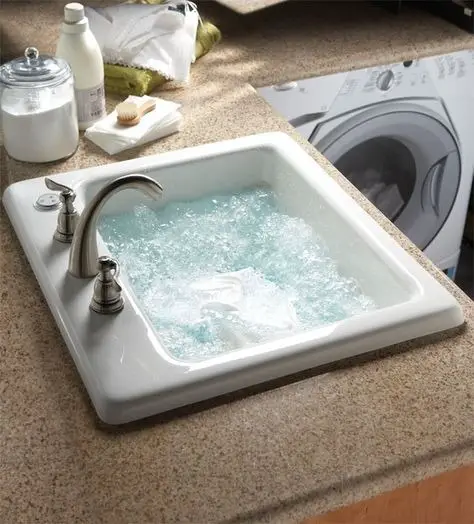
Step 4: Add Detergent and Soak the Clothes
Continue by adding your chosen detergent to the washtub, then swish the clothes around just enough to get them nice and soapy. After that, you can relax – let those clothes soak in all that sudsy goodness for at least 30 minutes.
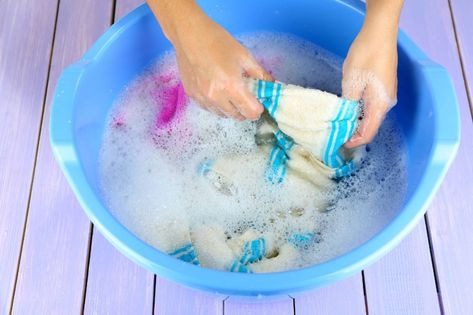
When choosing a detergent for washing baby clothes, always opt for one that is mild and free of harsh chemicals. Look for a detergent that is safe on sensitive skin and fragrance-free.
Step 5: Rinse Again
To ensure perfect cleanliness and avoid any skin irritation, be sure to rinse the clothes after washing them with detergent. Doing so removes any trace of the detergent from the garment and will keep your little one feeling squeaky clean and happy.
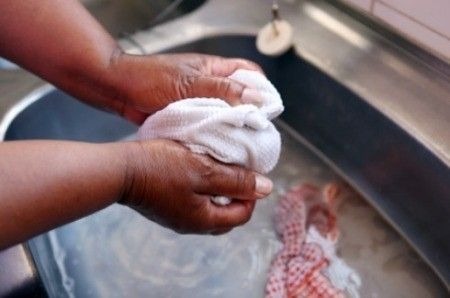
Use tepid or cold running water until all bubbles from the detergent have dissipated, then you can trust that your baby’s clothes are as pure as can be.
Step 6: Dry the Clothes
One of the biggest tips to remember when hand washing baby clothes is to dry them immediately – no skipping this step! Leaving baby clothes to linger in the moisture for too long can lead them to become easily stained or worn out. There’s also an increased risk of bacteria and mildew in your laundry room.
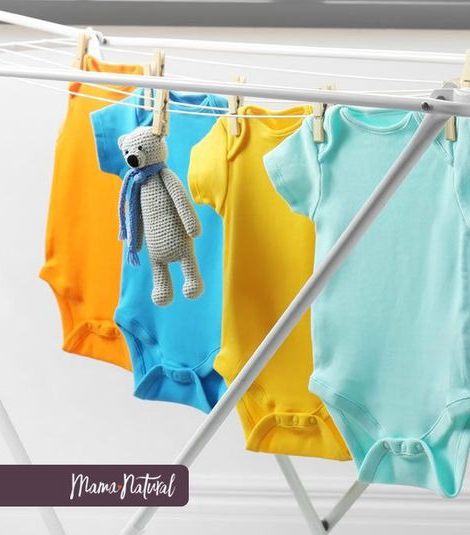
The best option here is to leave them out in the sunlight, as it provides a natural method of sterilizing and deodorizing fabrics while removing all those pesky spots or stains.
The 5 Best Laundry Hacks for Washing Baby Clothes
If you’re expecting a little bundle of joy to join your family soon, make sure they dress in style by mastering the best laundry hacks for washing baby clothes:
- When pre-treating a stain on a baby garment, make sure to remove any solids from the area first.
- Remember to wash your hands after handling clothing that has been soiled by poop or vomit.
- Don’t skip washes either – those stains don’t come out on their own!
- Hot water is effective in eliminating germs and bacteria but be careful not to scald your hands when using it; use gloves instead!
- To give clothes an extra-gentle treatment, try tumble drying them only for 15 minutes.
With these easy hacks your little ones will stay squeaky clean and safe.
Final Thoughts
After washing your baby’s clothes by following the steps outlined above, you can be sure they are clean and ready to provide comfort to your little one. Don’t forget that if you have any lingering doubts about a specific item of clothing or special material, it is always best to consult its care instructions before washing to ensure the best outcome.
Finally, remember that while cleaning your baby’s clothes may seem like an extra chore while already juggling being a parent, it will make a world of difference when it comes to keeping them healthy and happy!
FAQ
How often should you wash baby clothes?
You should aim to wash baby clothes after every wear. This will help ensure that any bacteria or residue from wear are removed while keeping your baby comfortable in clean and fresh garments. Consider pre-washing new clothes before they are worn by your baby, as some new items can contain residues from the factory that you’ll want to make sure are gone.
What temperature should I wash baby clothes?
Generally speaking, the optimal temperature for laundering an infant’s clothing is 30°C, and be sure to use a gentle cycle if possible. These settings will ensure that your little one’s clothes are clean without causing any fabric damage due to excessive heat.
How to wash baby wool clothes?
For best results, look for a wool cycle on your washing machine and use it with the temperature set to 40°C. This will offer a gentle action that won’t damage the delicate fibers. If a wool cycle isn’t available, simply choose the cold water wash or delicate cycle instead.
Make sure to always read the label of each item before attempting to wash it and never put them in the dryer as they can shrink. Finally, drying flat is key to make sure that damp spots don’t form on the fabric.
How to store baby clothes after laundering?
When laundering baby clothes, it is important to store them properly to keep them in good condition. The best way to do this is by folding the clothes and stacking them neatly in drawers or shelving units.
If you are hanging clothes, be sure to use only plastic or wooden hangers since metal ones could rust and possibly cause damage. Try to store special items like mementos and memorable outfits together, away from regular clothing for easy access when needed.
Is it better to tumble dry or air dry your baby’s clothes?
Tumble drying can cause shrinkage of some fabrics, though it may also be faster in some cases. Air drying is usually best for clothing with more delicate fabrics, such as 100% cotton, but it may require more time and patience depending on the item.
Ultimately, deciding which drying method works best will depend on a variety of factors like fabric types, how often items need to be washed and how much time you have to spare.